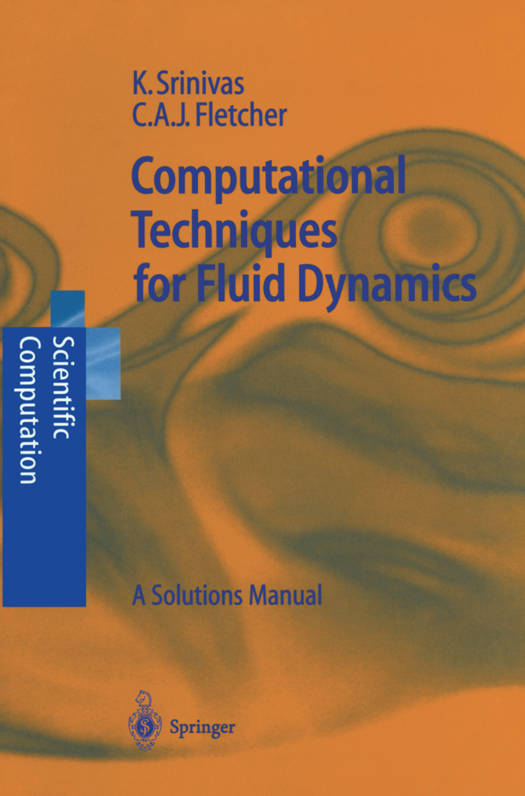
- Afhalen na 1 uur in een winkel met voorraad
- Gratis thuislevering in België vanaf € 30
- Ruim aanbod met 7 miljoen producten
- Afhalen na 1 uur in een winkel met voorraad
- Gratis thuislevering in België vanaf € 30
- Ruim aanbod met 7 miljoen producten
Zoeken
Computational Techniques for Fluid Dynamics
A Solutions Manual
Karkenahalli Srinivas, Clive A J Fletcher
€ 179,45
+ 358 punten
Omschrijving
This complementary text provides detailed solutions for the problems that appear in Chapters 2 to 18 of Computational Techniques for Fluid Dynamics (CTFD), Second Edition. Consequently there is no Chapter 1 in this solutions manual. The solutions are indicated in enough detail for the serious reader to have little difficulty in completing any intermediate steps. Many of the problems require the reader to write a computer program to obtain the solution. Tabulated data, from computer output, are included where appropriate and coding enhancements to the programs provided in CTFD are indicated in the solutions. In some instances completely new programs have been written and the listing forms part of the solution. All of the program modifications, new programs and input/output files are available on an IBM- compatible floppy direct from C.A.J. Fletcher. Many of the problems are substantial enough to be considered mini-projects and the discussion is aimed as much at encouraging the reader to explore ex- tensions and what-if scenarios leading to further dcvelopment as at providing neatly packaged solutions. Indeed, in order to givc the reader a better intro- duction to CFD reality, not all the problems do have a "happy ending". Some suggested extensions fail; but the reasons for the failure are illuminating.
Specificaties
Betrokkenen
- Auteur(s):
- Uitgeverij:
Inhoud
- Aantal bladzijden:
- 256
- Taal:
- Engels
- Reeks:
Eigenschappen
- Productcode (EAN):
- 9783540543046
- Verschijningsdatum:
- 8/05/1992
- Uitvoering:
- Paperback
- Formaat:
- Trade paperback (VS)
- Afmetingen:
- 156 mm x 234 mm
- Gewicht:
- 381 g

Alleen bij Standaard Boekhandel
+ 358 punten op je klantenkaart van Standaard Boekhandel
Beoordelingen
We publiceren alleen reviews die voldoen aan de voorwaarden voor reviews. Bekijk onze voorwaarden voor reviews.











